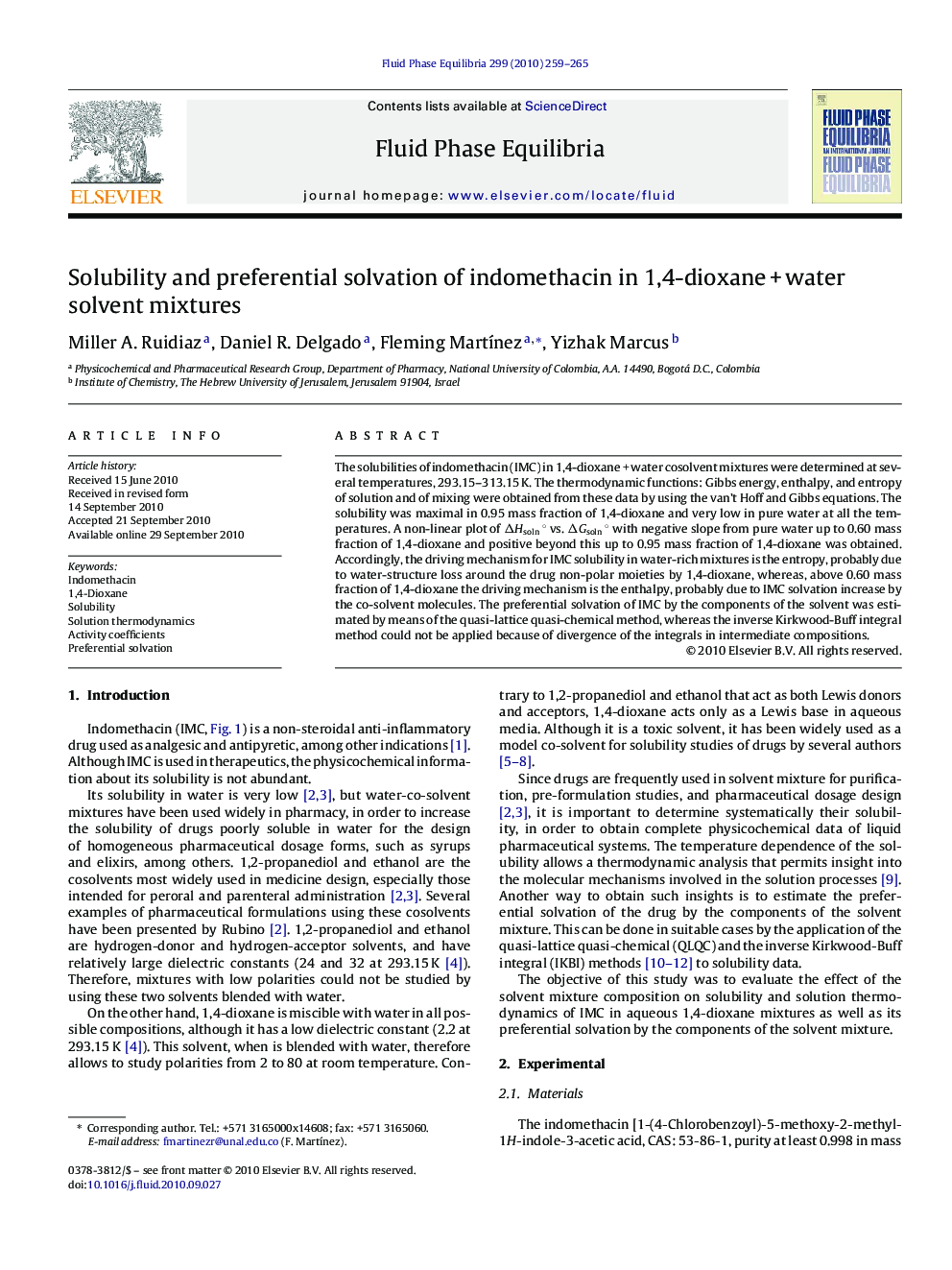| Article ID | Journal | Published Year | Pages | File Type |
|---|---|---|---|---|
| 202782 | Fluid Phase Equilibria | 2010 | 7 Pages |
The solubilities of indomethacin (IMC) in 1,4-dioxane + water cosolvent mixtures were determined at several temperatures, 293.15–313.15 K. The thermodynamic functions: Gibbs energy, enthalpy, and entropy of solution and of mixing were obtained from these data by using the van’t Hoff and Gibbs equations. The solubility was maximal in 0.95 mass fraction of 1,4-dioxane and very low in pure water at all the temperatures. A non-linear plot of ΔHsoln ° vs. ΔGsoln ° with negative slope from pure water up to 0.60 mass fraction of 1,4-dioxane and positive beyond this up to 0.95 mass fraction of 1,4-dioxane was obtained. Accordingly, the driving mechanism for IMC solubility in water-rich mixtures is the entropy, probably due to water-structure loss around the drug non-polar moieties by 1,4-dioxane, whereas, above 0.60 mass fraction of 1,4-dioxane the driving mechanism is the enthalpy, probably due to IMC solvation increase by the co-solvent molecules. The preferential solvation of IMC by the components of the solvent was estimated by means of the quasi-lattice quasi-chemical method, whereas the inverse Kirkwood-Buff integral method could not be applied because of divergence of the integrals in intermediate compositions.
